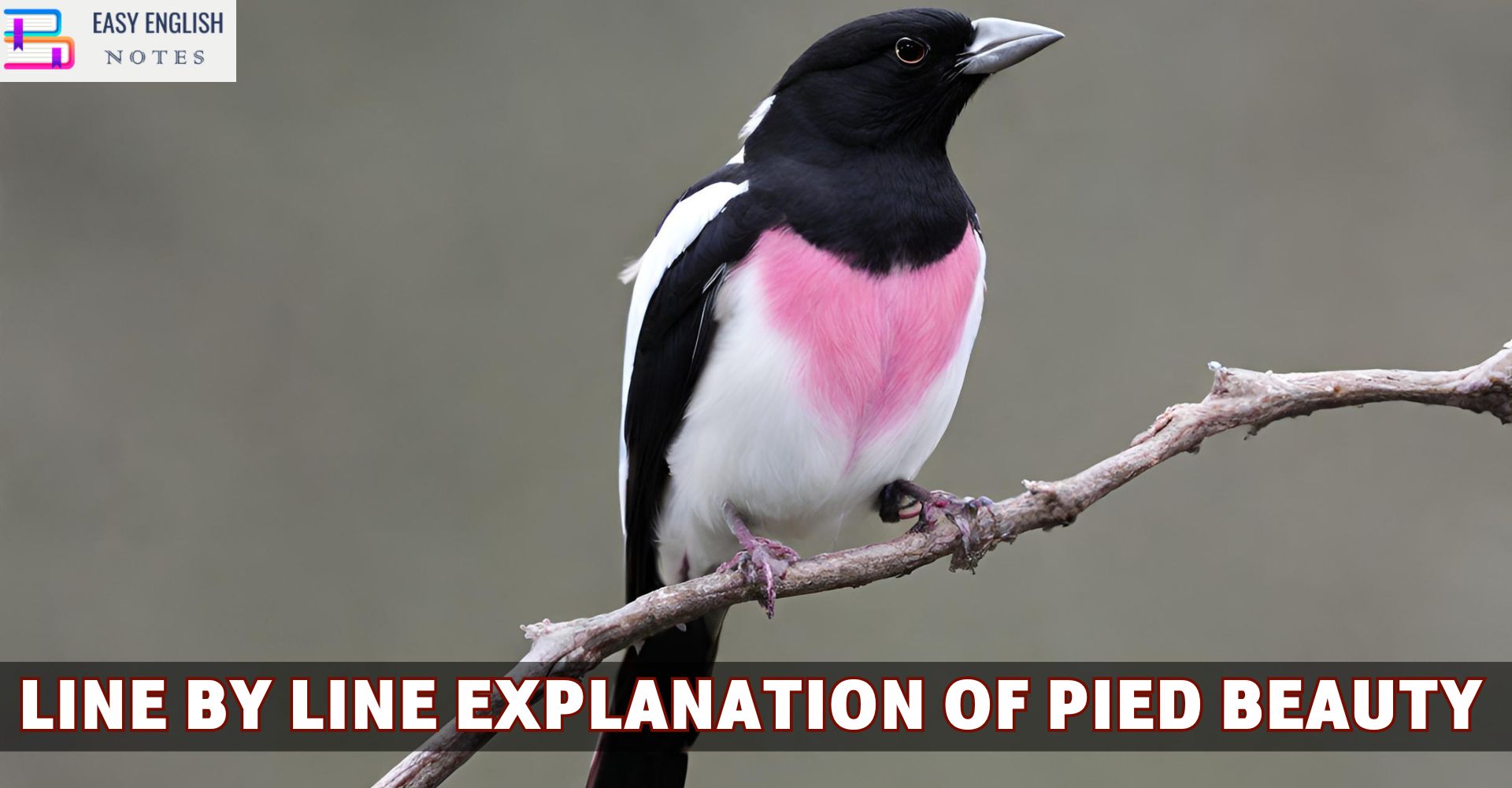All things counter, original, spare, strange
Whatever is fickle, freckled (Who knows how?)
With swift, slow, sweet, sour, adazzle, dim,
He fathers forth whose beauty is past change, Praise him.
In the present poem “Pied Beauty Hopkins pays homage to God for having created dappled things in this world. These things are the evidence of glory of God. The poet sums up the general qualities he admires in such dappled things. He admires the uniqueness and originality, their rarity that makes them precious. He likes the fickleness and freckled appearance. At the same time he asks the metaphysical question: “who knows how?” He means to say that nobody can explain the reason why these things are ‘freckled’ some things are swift, other slow, some are sweet. others sour. Some are bright, others lusterless. But nobody knows why such contrasts exists.
And though the last lights off the black west went
Oh, morning, at the brown brink east ward, spring
Because the Holy Ghost over the bent World broods with warm breast and with ah ! bright wings. The following sentences have been taken by Hopkin’s famous poem. Here the poet says although the sun goes down the western sky and the earth is plunged in darkness, the sun will be seen rising again in the eastern -sky. The real source of the renewal of nature is pointed by the poet. This source is Holy Ghost. The poet thinks the Biblical image of Holy Ghost in the form of a dove.
Also Read :
- Compare Hamlet with Macbeth, Othello and other Tragedies
- “The Pardoner’s Tale” is the finest tale of Chaucer
- Prologue to Canterbury Tales – (Short Ques & Ans)
- Confessional Poetry – Definition & meaning
- Line By Line Explanation Of The Poem The Eve of St. Agnes
“Pied Beauty” is a short lyrical poem by Gerard Manley Hopkins, a 19th-century English poet. This poem is a celebration of the diversity and beauty of the world, especially in those things that are ‘pied’ or multicolored and patterned. Here’s an explanation of its themes and content:
- Appreciation of Diverse Beauty: The poem opens with a call to praise God for “dappled things”. Hopkins uses vivid language to celebrate the variety and uniqueness found in nature. He mentions the skies, which can be both couple-colored and brindle, the spotted cows, and the rose-moles on a trout.
- Imagery of Nature: Hopkins skillfully employs imagery to bring to life the various textures and patterns in nature. He talks about the landscapes, the plowed furrows in fields, and the chestnuts falling from the trees, each distinct in its appearance.
- Contrast and Paradox: The poem frequently uses contrast and paradox to highlight the beauty in differences. For example, Hopkins speaks of the ‘freckled’ (spotted) and ‘stipple’ (marked with numerous small dots) appearance of things, suggesting a beauty in irregularity and imperfection.
- Reflection on Impermanence: There’s a subtle acknowledgement of the transient nature of these beauties. The poem suggests that while these patterns are original and unique, they are also temporary, constantly changing with time.
- Celebration of the Creator: In the final lines, Hopkins contrasts the changing nature of the world with the unchanging character of God. This suggests that while the world’s beauty is ephemeral, the beauty and greatness of the Creator are constant and eternal.
Overall, “Pied Beauty” is a powerful ode to the myriad beauties of the natural world and a reflection on the idea of a constant, unchanging divine presence that underlies these fleeting beauties. Hopkins’s use of sprung rhythm and vivid imagery makes this a uniquely expressive and evocative piece of poetry.











